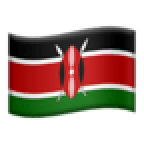On September 11, Ethiopia marks Enkutatash, the start of the new year in the Ethiopian calendar.
This year, the country enters 2018 according to its calendar system.
As a neighbouring East African nation, Kenya shares historical trade routes and cultural exchanges with Ethiopia, making such traditions relevant to Kenyans interested in regional heritage.
Ethiopian communities in Kenya, including in Nairobi, hold Enkutatash celebrations, fostering cross-border connections.
What Enkutatash is
Enkutatash, meaning 'gift of jewels' in Amharic, serves as the Ethiopian New Year and a public holiday in Ethiopia and Eritrea.
It falls on Meskerem 1 in the Ethiopian calendar, which corresponds to September 11 in the Gregorian calendar, or September 12 in Ethiopian leap years.
&format=jpeg)
Enkutatash means "gift of jewels" in Amharic
The Ethiopian calendar, based on the ancient Coptic system, runs seven to eight years behind the Gregorian due to differing calculations of the annunciation of Jesus's birth.
It features 13 months: 12 with 30 days each and a 13th month, Pagume, with five or six days.
This structure contrasts with the Gregorian's variable month lengths.
READ ALSO: 4 unique differences between the Ethiopian & Gregorian calendars
History and significance
The name Enkutatash originates from the legend of the Queen of Sheba's return from Jerusalem after visiting King Solomon around 980 BC.
&format=jpeg)
Enkutatash originates from the legend of the Queen of Sheba's return from Jerusalem
Chiefs welcomed her with jewels, or 'enku,' symbolising renewal.
The holiday also coincides with the end of Ethiopia's rainy season, when yellow Meskel daisies bloom across the landscape, representing hope and fresh starts.
&format=jpeg)
The Maskel daisies, or Adey Abeba, are a symbol of Ethiopian New Year || Anadolu Agency - Getty Images
Rooted in Ethiopian Orthodox Church traditions, it emphasises themes of gratitude, unity, and spiritual reflection.
READ ALSO: 5 key highlights of President Ruto’s trip to Ethiopia
Celebrations and customs
Enkutatash begins with church services in the Ethiopian Orthodox tradition, where attendees wear white clothing and participate in prayers.
&format=jpeg)
Attendees of Enkutatash, wearing white clothes
Families and communities gather for singing, dancing, and exchanging greetings of 'Melkam Addis Amet,' meaning 'Happy New Year.'
Young girls, dressed in traditional embroidered outfits, go door-to-door singing songs and presenting bouquets of Meskel daisies in return for small gifts or money.
Boys often paint or draw pictures to share.
In the evening, groups light bonfires, known as 'chibo,' using torches from tree branches, to symbolise the burning away of the old year.
&format=jpeg)
Chibo burning
Celebrations extend to Ethiopian diaspora communities, including in Kenya, where events highlight shared East African cultural elements like communal gatherings.
Not all groups, such as Kenyan Oromos, observe it identically, as it ties closely to Orthodox practices.
READ ALSO: How Kenya edged out Ethiopia to reclaim East Africa's top economy
Food and feasts
Preparations start the evening before with purchasing a chicken or sheep for slaughter the next morning, a custom symbolising abundance based on household means.
The main meal features doro wat, a spicy chicken stew with berbere spice, onions, and butter, served atop injera, a sourdough flatbread made from teff flour.
&format=jpeg)
Doro Wat - Ethiopian Chicken & Egg Stew
Other dishes include kitfo, minced raw beef seasoned with spices and clarified butter, and vegetable stews for variety.
Meals are communal, eaten by hand from a shared plate. Beverages include tej, a honey wine, and tella, a home-brewed beer.
&format=jpeg)
Freshly roasted coffee beans are ground, brewed, and served in three rounds
The day often concludes with a coffee ceremony, where freshly roasted beans are ground, brewed, and served in three rounds, accompanied by popcorn or bread, lasting several hours to encourage conversation.


&format=jpeg)
)
&format=jpeg)
&format=jpeg)
&format=jpeg)